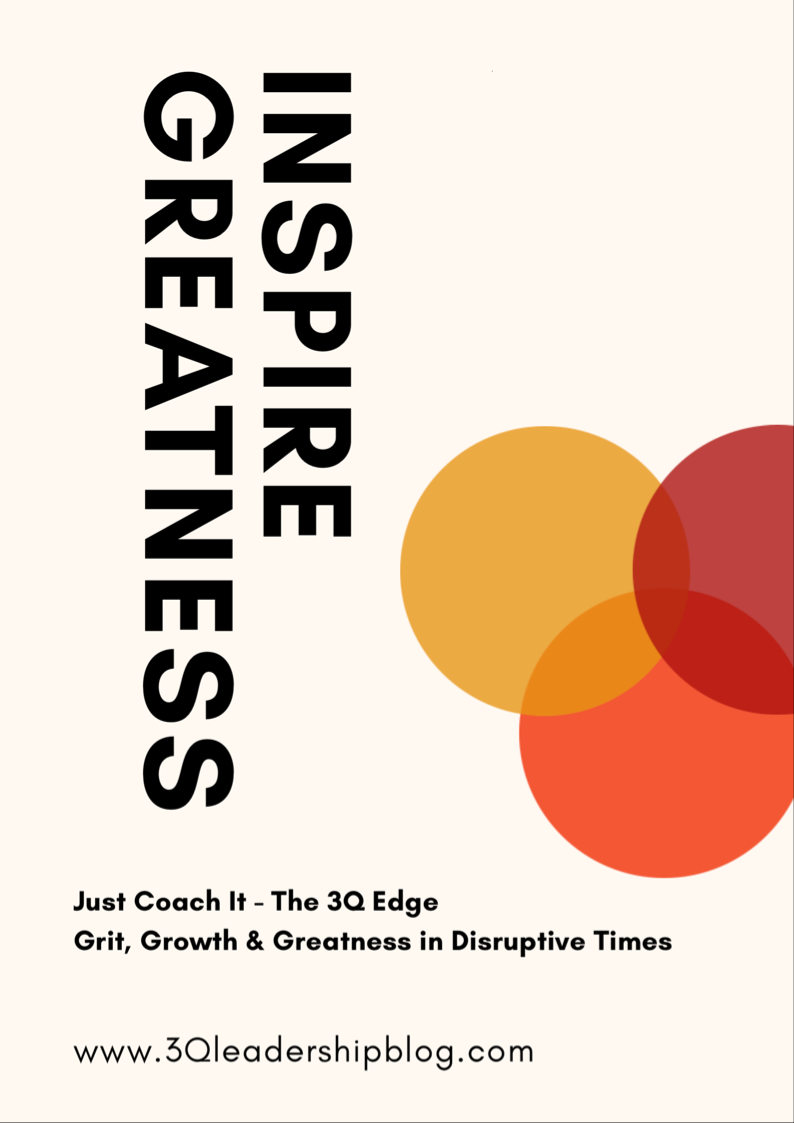

Trends like AI and other smart technologies working alongside the human workforce can help to enable future-ready leadership and digital transformation. Learn more about the most important leadership trends facing us this year by reading this guest post and infographic by Jomel Alos, Guthrie-Jensen Consultants.
Leaders come in different shapes and forms. They may subscribe to a single style of leadership or a combination of the best practices in people management. Whatever the case, one thing that you have to consider as a team lead, manager, or officer of your company is how your leadership principles are influencing the people around you. The goal is to keep your followers or employees motivated, guided, and engaged.
Thus, here’s an infographic that can help you lead your team and your company to success in 2019 as it discusses the future of leadership development across industries. Also, it will explain the modern dynamic of leadership wherein artificial intelligence (AI) and other smart technologies work together alongside the human workforce.

Leadership in Numbers
Companies need qualified leaders to create and implement policies, which can help the organization respond to existing or future business challenges. However, it appears that within companies, there’s a shortage of high-quality leaders to steer the business toward success.
Leaders who are either unskilled or unprepared are found in 51% of organizations, according to research on the state of leadership development across industries.
Despite the presence of training programs for leaders, there seems to be a gap. This does not only affect a company’s level of employee engagement and productivity but can also undermine its ability to survive as a business organization.
While the majority of companies or a good 89% of them agree that developing leaders is a worthy business activity, only 10% of C-suite executives think that their leadership programs produce results that are helpful for their organization.
Studies say that the most effective leadership initiatives are those that are properly directed. They also describe successful companies as being able to adapt their leadership development practices according to their business goals, needs, or challenges.
Just as business models are unique to every organization, companies also need to determine the right types of actions or behavior that managers should exemplify. This way, they can inspire employees to work harder and smarter, which can help drive better business performance for the company.
Speaking of leadership effects in the workplace, managers have been cited as one of the reasons that employees leave the company. One in two employees are said to have quit from their job to get away from a boss who is an ineffective communicator or is not approachable.
Survey findings seem to support this lack of communication and people handling skills among 69% of managers, with 37% of managers claiming that they don’t find it easy to talk to employees about their work performance. The downside to this is that employees do not receive enough guidance that will make them efficient and engaged in their work.
Needless to say, these statistics can translate to costly turnovers, which we can all agree are likely to hamper business operations, tarnish a company’s image, and reduce morale in the workplace.
Leadership Trends in 2019
In this section, we’ll delve deeper into leadership trends that have the potential to make an impact on the modern workplace, including your own organization.
1. Decrease of age-based seniority
It used to be that senior employees were the first to be promoted to leadership or managerial positions in many companies. However, the entry of millennials into the workforce merits that you re-evaluate your leadership development initiatives, especially since millennials are expected to make up 75% of the global workforce by 2025.
Instead of relying on age or length of service as a basis for promotion, you should come up with other ways to discover leadership talent or capacity across all of your employees, whether they’re Gen X, baby boomers, or Gen Y. The key is in using relevant strategies that can attract, engage, and retain workers across these generations.
2. Importance of relationships in employee engagement
You need to be the best manager you can be for your employees. There are several ways that you can promote workforce engagement, starting with building relationships with your employees. To realize this goal, you need to focus on certain soft skills, such as emotional intelligence and people skills, as employees feel comfortable toward someone who’s able to relate to their concerns, sentiments, or challenges.
3. Redesign of management structure
Ideally, performance management processes should be two-fold. As leaders, you have to help your employees set clear goals and the means of measuring their progress over time.
In return, employees should feel welcome to give their honest assessment of your leadership style, so that everyone in the organization can help build a collaborative environment.
4. Investing in human capital
No matter how far-reaching technologies may become in the future, they cannot replace employees as the most valuable and capable asset of the company. Thus, it’s only wise that you invest in their further learning as having employees who can work to their full potential can help your business grow.
At the same time, you should be in touch with the need for employees to experience a work-life balance. Free your employees from unnecessary meetings, after-work emails, and additional activities to prevent them from feeling overwhelmed.
5. Defining the impact of effective leadership in business
As mentioned earlier, leadership only becomes significant when it’s in line with the thrusts of the organization. When you have a full understanding of what the company believes in and hopes to achieve, you will exert efforts to stay in that direction and, as a result, inspire the same kind of response among the members of your team. Moreover, a unified approach on how to accomplish business targets can set your company apart from the rest of the industry.
6. Improving the quality and level of coaching
There’s no question that coaching is an integral part of leadership development. Through mentoring, you get to know the individual talents in your organization as well as their attributes, including strengths and weaknesses. This will give you a chance to groom high performers for more challenging tasks or to rally behind underachievers, so they feel included in the team.
For your coaching to really matter, you’ll need to study your employees’ learning styles. Make sure that you’re sharing the right content through proper delivery channels to bring about authentic learning in the workplace.
7. Keeping a culture of agility
The rise of new technologies and creative minds are giving way to unprecedented shifts and disruptions in the market, which can prove to be challenging for businesses. These scenarios call for you to be strategically agile in your leadership style so you can help your organization to be more responsive toward emerging demands and opportunities.
In a culture of agility, you’re supposed to keep track of global trends and analyses how these may affect your own industry. As a leader, you should be able to educate your employees about current market conditions and influence your employees to be more interested in ideas, which can bring about improvements or innovations for the company.
8. Making use of technology
Having both the talent and the technology to serve customers is fast becoming a norm in many business organizations. In the same way, you should take advantage of technology to help you in different areas of talent management, such as training, assessments, and other employee development activities.
Through AI technologies, you can gather valuable amounts of data about your employees. These can range from determining your employees’ leave pattern to analyzing your agent’s speech nuances during client calls – all of which can give you insights on how to help your employees perform their tasks better.
 Author Bio: Jomel Alos is a Consultant at Guthrie-Jensen Consultants, a management training and consultancy firm in the Philippines. He enjoys sharing his knowledge of human resource solutions, as well as helping businesses achieve greater growth, competitiveness, and profitability. When he’s not working, he’s watching TV shows about designing like Tiny House Nation, Forged in Fire, and Ellen’s Design Challenge
Author Bio: Jomel Alos is a Consultant at Guthrie-Jensen Consultants, a management training and consultancy firm in the Philippines. He enjoys sharing his knowledge of human resource solutions, as well as helping businesses achieve greater growth, competitiveness, and profitability. When he’s not working, he’s watching TV shows about designing like Tiny House Nation, Forged in Fire, and Ellen’s Design Challenge







 Author Bio: Jomel Alos is a Consultant at
Author Bio: Jomel Alos is a Consultant at